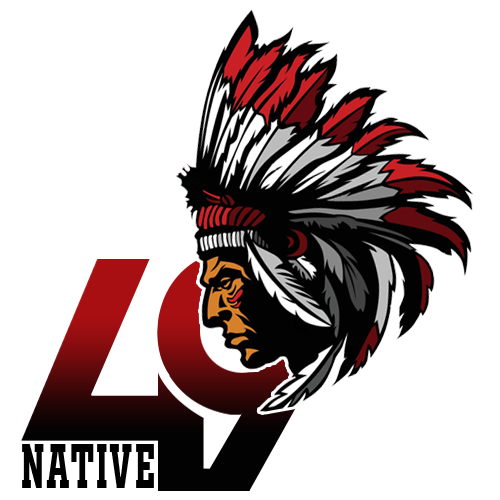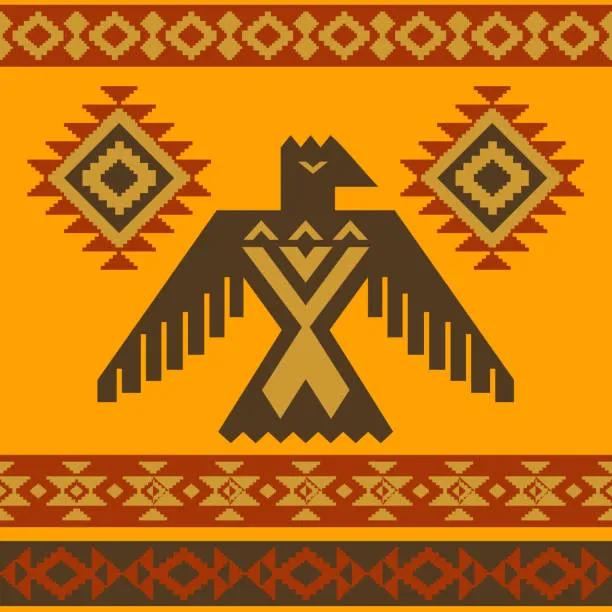In the heart of Native American culture, the eagle soars as a symbol of profound significance, embodying strength, spirituality, and a timeless connection to tradition. Among the diverse tapestry of Native American tribes, the eagle holds a unique and revered status, uniting them through its symbolism.
This article of 49native explores the traditional Native American eagle symbol, delving into its multifaceted meanings, spiritual connotations, and enduring presence in indigenous communities
What does the American eagle symbolize?
Since 1782, the bald eagle has held the prestigious title of the national bird of the United States. Its remarkable image, with outspread wings, graces the Great Seal of the country and adorns countless government institutions and official documents.
Undoubtedly, the bald eagle stands as the most emblematic avian figure in the entirety of America. Its silhouette proudly features on the president’s flag, the House of Representatives’ mace, military insignia, and, perhaps most recognizably, on billions of one-dollar bills.
The Bald Eagle’s Debut as an American Symbol
The bald eagle made its initial appearance as a symbol of American identity on a Massachusetts copper cent in 1776. Following this debut, it found a prominent place on the reverse side of numerous U.S. coins, including the silver dollar, half-dollar, and quarter. Even the nation’s gold coins adopted the eagle motif, with denominations such as the eagle, half eagle, quarter eagle, and double eagle.
A Contentious Path to Adoption
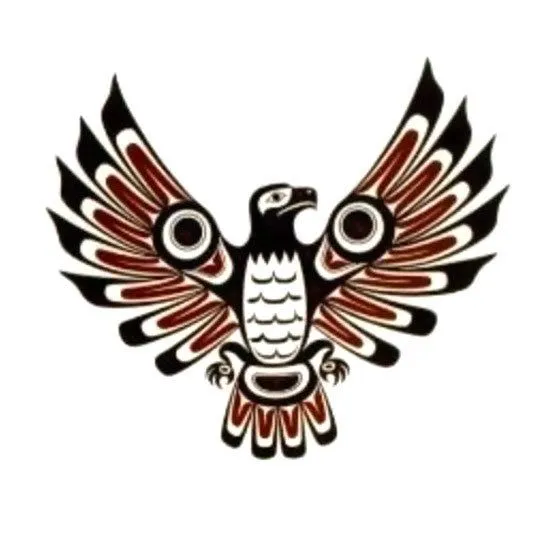
For six years, Congress engaged in a fervent debate over what creature should be chosen as the national emblem. It wasn’t until 1789 that the bald eagle earned this esteemed status as the symbol of the nascent nation.
However, not all members of Congress were in unanimous agreement. Benjamin Franklin, one of the most notable dissenters, expressed his reservations about the bald eagle in a letter to a friend. Franklin opined that the bald eagle, akin to certain individuals, had questionable moral character, being prone to a life of thievery and destitution. In his eyes, the turkey, a native American bird, stood as a more dignified choice.
The Bald Eagle’s Resilience and Significance
Despite Franklin’s reservations, the bald eagle had a long history of being seen as a symbol of strength, courage, freedom, and immortality, not only in America but across the world. Moreover, the bald eagle was unique in that it was exclusively indigenous to North America.
Over the years, certain individual bald eagles became notable in American history. “Old Abe,” the mascot of a Wisconsin regiment during the Civil War, survived an astonishing 42 battle engagements despite being a prime target for enemy riflemen.
A Protected Icon
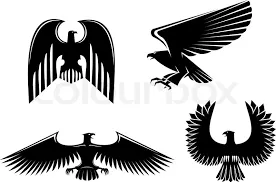
Today, the American bald eagle enjoys protection under the National Emblem Act of 1940. While these magnificent creatures were once widespread throughout the continental United States, their population has seen a significant decline.
Factors such as farmers and fishermen killing eagles for perceived threats to poultry and fishing nets, eagles being captured for falconry, and the harmful effects of pesticides have taken their toll. Today, most bald eagles can be found in the northern regions of North America and within the sanctuary of Florida’s breeding grounds.
President Kennedy’s Tribute to the Bald Eagle
In a letter to the Audubon Society, President John F. Kennedy aptly encapsulated the essence of the bald eagle as the emblem of the nation. He spoke of the bird’s fierce beauty and proud independence, qualities that poignantly symbolize the strength and freedom of America.
President Kennedy emphasized the solemn duty of protecting these noble creatures to ensure that the eagle does not fade into obscurity.
What do eagles represent in Navajo culture?
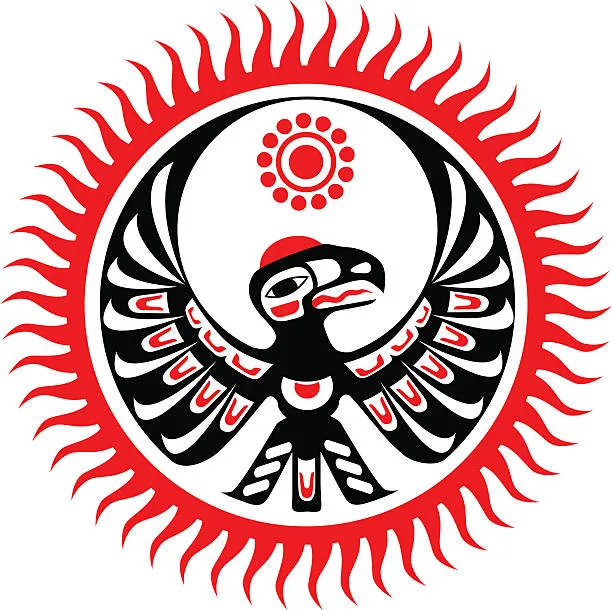
In the rich tapestry of Diné (Navajo) culture, one symbol soars above all others—the Atsá, or eagle. Revered as the foremost avian presence, the eagle stands as a powerful predator and an emblem of the warrior spirit.
Its spiritual significance resonates deeply within Navajo traditions, permeating various ceremonies, most notably the Eagle Way—a profound healing ritual that holds immense importance. Every aspect of the eagle, from its majestic feathers to its gall, plays a vital role in these sacred ceremonies, offering solace and protection.
The Eagle’s Role in Healing Ceremonies
The Eagle Way, a cornerstone of Diné culture, revolves around the eagle’s spiritual prowess. This transformative ceremony is a profound testament to the eagle’s sacred status.
In the hands of skilled healers, it becomes a conduit for the restoration of well-being. As part of the ceremony, every element of the eagle is employed, each with its unique significance. These components serve as instruments of restoration, mending not only physical ailments but also spiritual and emotional wounds.
Eagle’s Gall: A Guardian Against Malevolent Forces
Within the Diné culture, the eagle’s gall assumes a role of paramount importance. It is believed to possess the power to shield against the most potent malevolent forces. This protective aspect of the eagle’s gall reinforces its sacred standing in the Navajo community.
Mythical Connection: The Gift of the Eagle Feather
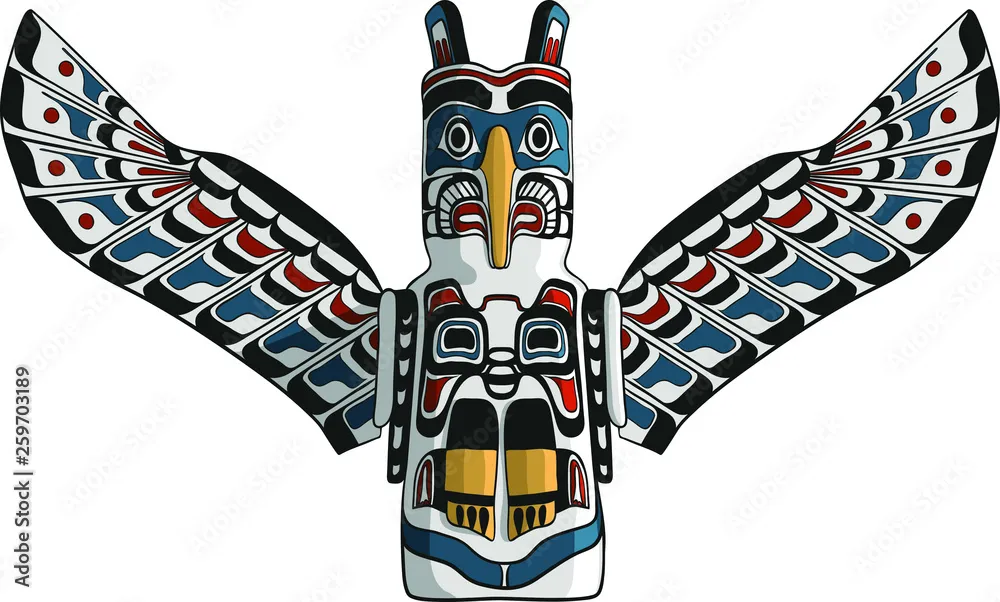
In the enchanting tapestry of Diné sacred stories, one narrative stands out—the tale of Na’ashjé’íí Asdzą́ą́, known as Spider Woman, who bestowed a living eagle feather upon the Hero Twins. This extraordinary gift was no ordinary feather;
it was a token of profound significance and safeguarded the Twins on their perilous journey into the world. This mythical connection between the eagle and the heroic twins underscores the eagle’s role as a guardian and protector in Navajo culture.
Eagle Symbolism Beyond Ceremonies
The eagle’s influence extends far beyond the confines of formal ceremonies. Basket weaver Sally Black beautifully captures this essence, stating, “The eagle is everywhere.” Its omnipresence in Navajo culture is a testament to its enduring significance.
The eagle becomes a focal point of prayer and reverence whenever it takes flight overhead. This act of blessing oneself when an eagle graces the sky exemplifies the deeply ingrained spiritual connection between the Navajo people and this majestic bird.
The Creative Inspiration of the Eagle
The eagle’s sacred presence extends even further, touching the realm of creativity. As Sally Black notes, “We used the eagle for ceremonies. You can pray to the eagle, when you see it flying up there, you bless yourself . . .
That’s why I always like to do eagle designs. They just come to you.” This profound artistic inspiration drawn from the eagle exemplifies the bird’s enduring influence on Navajo culture, transcending the boundaries of spirituality and creativity.
In conclusion, the eagle stands as a towering symbol of strength, protection, and healing within Diné (Navajo) culture. Its significance reverberates through sacred ceremonies, myths, and daily life, embodying the enduring spirit and resilience of the Navajo people.
The Traditional Native American Eagle Symbol
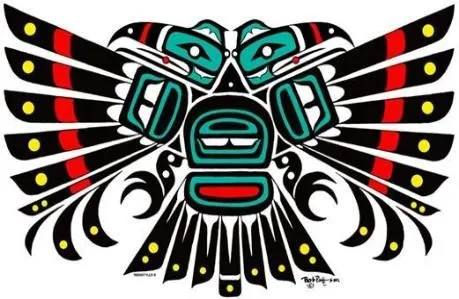
In the intricate tapestry of Native American traditions, where every aspect of the natural world is imbued with profound symbolism, the eagle soars as a majestic and revered figure. As the strongest and most courageous of all birds, the eagle holds a place of utmost honor in the hearts and minds of Native Americans. Central to this reverence is the eagle’s feathers, regarded as symbols of the highest virtues—bravery, strength, and holiness.
Within Native American culture, the act of gifting eagle feathers to another individual is a profound gesture of honor and respect. These feathers, when donned, are worn with a deep sense of dignity and pride, for they carry not only the essence of the eagle but also the values it embodies.
Should an eagle feather ever fall to the ground during the course of a Native American dance, it is not merely picked up casually. Instead, a solemn ceremony ensues to retrieve the fallen feather, emphasizing the significance with which it is regarded. The owner, once reunited with the feather, takes great care to ensure it is never dropped again, a testament to the profound respect it commands.

Beyond adornment, eagle feathers hold a sacred role in the rituals of Native American spirituality. They are often used to embellish the ceremonial pipe, a profound symbol in itself. This choice is deliberate, as the eagle feather symbolizes the Great Spirit, an omnipotent presence that stands above all, the source from which strength and power emanate.
Intricately woven into the fabric of Native American life, eagle feathers and wings serve as powerful instruments of expression and intention.
For instance, when an eagle feather is gently held above an individual’s head, it signifies not only their inherent bravery but also serves as a wish for continued courage and happiness in their journey. Waving it over a gathering extends these blessings to everyone present, bestowing upon them wishes for peace, prosperity, and lasting happiness.
Indeed, within the soaring realm of Native American symbolism, the eagle and its sacred feathers exemplify the highest ideals and aspirations, embodying the indomitable spirit of a culture deeply rooted in reverence for the natural world.
Images of American eagles of indigenous people in life
Learn more about the significance of other birds in Native American culture: A Complete Guide: Blue Jay Symbolism Native American
